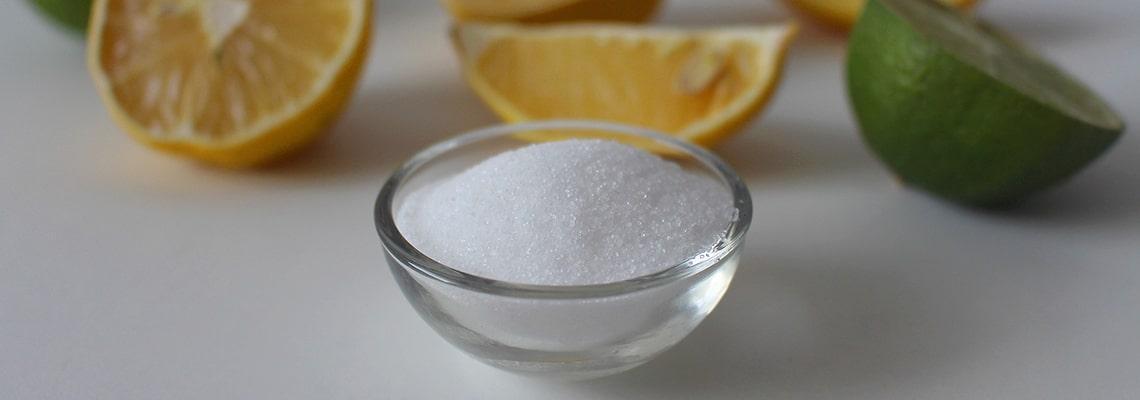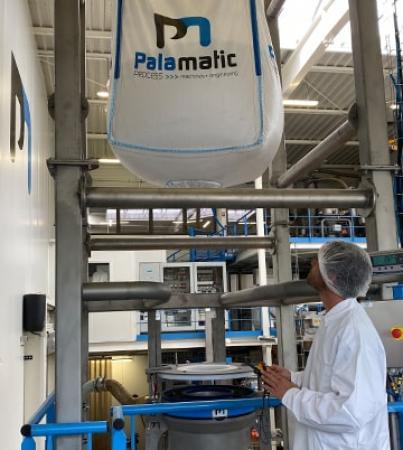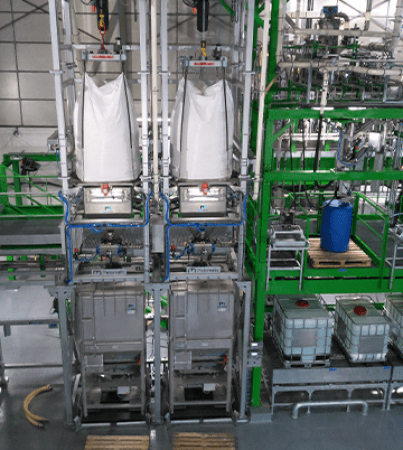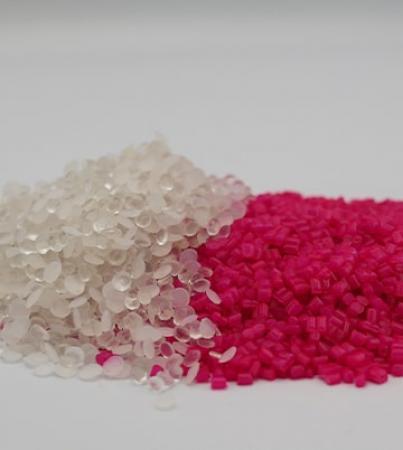1. Main characteristics of citric acid powder
Citric acid is naturally present in a wide variety of fruits and vegetables, especially citrus fruits.
The industrial production of powdered citric acid is achieved through the cultivation of Aspergillus niger (a fungus with the appearance of black mold on fruits and vegetables), fed on a substrate containing sucrose or glucose. The mold is then filtered and the citric acid is isolated by lime precipitation to give calcium citrate. The citric acid is then created via treatment of the calcium citrate with sulphuric acid.
The physical appearance of solid citric acid is in the form of crystals, powder, colorless or white and odorless. Citric acid is hygroscopic, abrasive and corrosive.
Citric acid powder is biodegradable and is not toxic to humans or the environment. However, it is irritating to eyes and skin and may cause irritation or discomfort if swallowed or inhaled.
The theoretical density of citric acid is 1.665 g/ml, its average particle size is generally between 270 and 500 µm.
The denomination of citric acid powder as a food additive is "E330".
2. Main applications of citric acid
In food preparations, powdered citric acid is used as a flavor enhancer and as an acidifier in soft drinks and sour candies.
It is also used in other sectors such as cosmetics, pharmaceuticals or the chemical industry where it is used in the composition of powdered detergent products (descaling powders).
One of the most common uses for citric acid is as an acidifying agent, an antioxidant or a flavor enhancer.
Its main use is related to its ability to adjust the pH of solutions.

3. Industrial handling of citric acid
Citric acid, being a hygroscopic powder, can crystallize when it comes in contact with moisture or water. Therefore, it must be stored in a climate controlled environment to prevent exposure to higher temperatures and humidity, doing so will prevent the formation of lumps. If citric acid powder is produced in bulk, its handling in the production process can be challenging.
4. Applications treating powdered citric acid with Palamatic Process equipment
In order to meet the packaging, transfer and storage needs of manufacturers using citric acid in their production process, Palamatic Process has developed equipment dedicated to this hygroscopic product.
Knife chopper EC
Our range of lump breakers offers the ideal solution for crushing powders with a tendency to form lumps. The industrial lump breakers are used to break up agglomerates that are created during the production process. The rapid rotation of special knives through a fixed grid causes the lumps to crumble.
Dust removal
Handling processes involving citric acid generate dust that can cause respiratory problems or irritation. In order to protect the production operators working on these lines and to guarantee a healthy working atmosphere, the installation of a dust removal system is imperative.
Citric acid can be packaged and delivered in sacks or big bags.
Bag emptying
The bag dump stations allow the manual unloading of citric acid delivered in sacks to the production sites. When it comes to deconditioning bags of powder that tend to set in storage, such as citric acid, it is advisable to use a flow aid system. Pneumatic vibrators positioned at the hopper of the sack tip tray promote the flow of the powder product. These pneumatic vibrators generate multidirectional vibrations that will loosen the citric acid and promote the flow of the powder into the downstream process.
Unloading of bulk bags
In order to facilitate the flow of citric acid stored in bulk bags, our bulk bag unloading stations can be equipped with massage cylinders.
The massage system assists the flow with the use of piston-driven paddles that break-up material arching and flow issues.
The vibrating plate is another alternative. Installed on silent blocks with a vibrating motor, it agitates the bottom of the big bag to aid in the flow of certain materials.
5. Palamatic Process customer applications with citric acid
Palamatic Process works with industries dealing with citric acid in their production process. Several Palamatic Process installations handling citric acid are currently in operation. Here are a few examples:
The main objective of this installation is to automate the filling of bulk bags in premix, ensuring cleanability and absence of product retention to avoid any cross-contamination.
Contact our powder experts to come and test your powders in our test center.

















